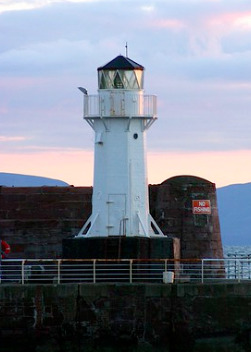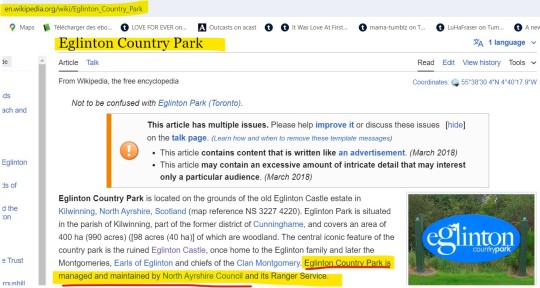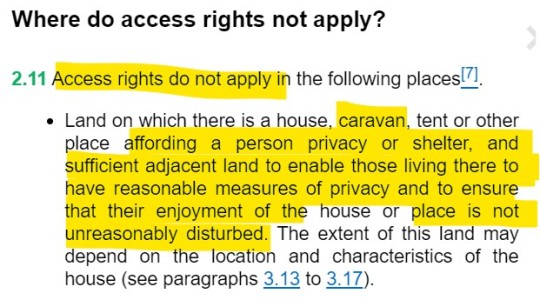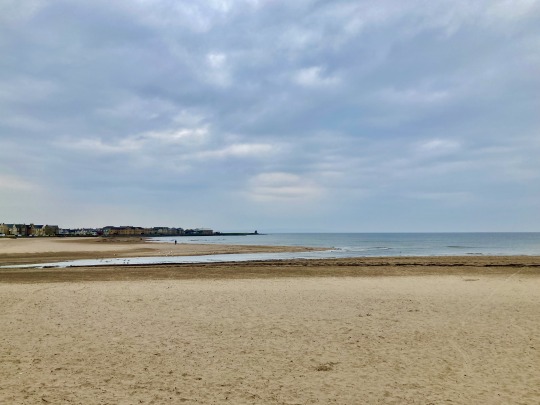#ardrossan
Explore tagged Tumblr posts
Text

Main Coast Road, Ardrossan, South Australia.
23 notes
·
View notes
Text

Ardrossan Lighthouse, North Ayrshire, Scotland, 2024.
#Scotland#BlackandWhite#Harbour#Sea#August#Grain#JohnPerivolaris#iPhone13#Hipstamatic#iphoneography#Ardrossan#Lighthouse#Ayrshire
3 notes
·
View notes
Photo

Ardrossan red beach today 😁 #yorkepeninsula #ardrossan #southaustralianbeaches #beach #southaustralia https://www.instagram.com/p/CpCDgG6P7E_/?igshid=NGJjMDIxMWI=
12 notes
·
View notes
Text
#photography#photographer#clickasnap#travel#blogger#blog#photoshop#manipulation#scotland#ayreshire#ardrossan
0 notes
Text
Silent Sunday May 14
This shot of #AdrossanCastle is my latest post for Silent Sunday May 14 #photography #travel
Ardrossan Castle

View On WordPress
0 notes
Text

her summer second ferry MV isle of arran still at Ardrossan.
0 notes
Text
LOTD: Androssan Pierhead
~sorry for delay - meant for April 18th, 2023~
(from: http://www.ibiblio.org/lighthouse/sctsw.htm
Ardrossan Pierhead (2)
1898 (station established 1840). Active; focal plane 11 m (36 ft); white or green light, depending on direction, 2 s on, 2 s off. 9 m (29 ft) octagonal cylindrical cast iron tower with lantern and a narrow gallery. mounted on a square black stone base. Lighthouse painted white, lantern roof black. W.F. Millar has a good photo, George Gallagher has a good closeup photo, Trabas has a photo, Marinas.com has good aerial photos, and Google has a street view and a satellite view. Located at the end of the ferry pier in Ardrossan; ferries depart from this pier for Brodick on the Isle of Arran. Accessible by walking the pier. Site open, tower closed. Operator: Clydeport. ARLHS SCO-317; Admiralty A4538; NGA 4704.)

(full photo found here; ©George Gallagher on Flickr)
#lotd lighthouses lighthouseoftheday pharology pharology101#Ardrossan Pierhead#scotland#united kingdom
0 notes
Text
What it meant to "do geology" in Hutton's time was to apply lessons of textual hermeneutics usually reserved for scripture [...] to the landscape. Geology was itself textual. Rocks were marks made by invisible processes that could be deciphered. Doing geology was a kind of reading, then, which existed in a dialectical relationship with writing. In The Theory of the Earth from 1788, Hutton wrote a new history of the earth as a [...] system [...]. Only a few kilometers away from Hutton’s unconformity [the geological site at Isle of Arran in Scotland that inspired his writing], [...] stands the remains of the Shell bitumen refinery [closed since 1986] as it sinks into the Atlantic Ocean. [...] As Hutton thought, being in a place is a hermeneutic practice. [...] [T]he Shell refinery at Ardrossan is a ruin of that machine, one whose great material derangements have defined the world since Hutton. [...]
The Shell Transport and Trading Company [now the well-known global oil company] was created in the Netherlands East Indies in 1897. The company’s first oil wells and refineries were in east Borneo [...]. The oil was taken by puncturing wells into subterranean deposits of a Bornean or Sumatran landscape, and then transported into an ever-expanding global network of oil depots at ports [...] at Singapore, then Chennai, and through the Suez Canal and into the Mediterranean. [...] The oil in these networks were Bornean and Sumatran landscapes on the move. Combustion engines burnt those landscapes. Machinery was lubricated by them. They illuminated the night as candlelight. [...] The Dutch East Indies was the new land of untapped promise in that multi-polar world of capitalist competition. British and Dutch colonial prospectors scoured the forests, rivers, and coasts of Borneo [...]. Marcus Samuel, the British founder of the Shell Transport and Trading Company, as his biographer [...] put it, was “mesmerized by oil, and by the vision of commanding oil all along the line from production to distribution, from the bowels of the earth to the laps of the Orient.” [...]
---
Shell emerged from a Victorian era fascination with shells.
In the 1830s, Marcus Samuel Sr. created a seashell import business in Houndsditch, London. The shells were used for decorating the covers of curio boxes. Sometimes, the boxes also contained miniature sculptures, also made from shells, of food and foliage, hybridizing oceanic and terrestrial life forms. Wealthy shell enthusiasts would sometimes apply shells to grottos attached to their houses. As British merchant vessels expanded into east Asia after the dissolution of the East India Company’s monopoly on trade in 1833, and the establishment of ports at Singapore and Hong Kong in 1824 and 1842, the import of exotic shells expanded.
Seashells from east Asia represented the oceanic expanse of British imperialism and a way to bring distant places near, not only the horizontal networks of the empire but also its oceanic depths.
---
The fashion for shells was also about telling new histories. The presence of shells, the pecten, or scallop, was a familiar bivalve icon in cultures on the northern edge of the Mediterranean. Aphrodite, for example, was said to have emerged from a scallop shell. Minerva was associated with scallops. Niches in public buildings and fountains in the Roman empire often contained scallop motifs. St. James, the patron saint of Spain, was represented by a scallop shell [...]. The pecten motif circulated throughout medieval European coats of arms, even in Britain. In 1898, when the Gallery of Palaeontology, Comparative Anatomy, and Anthropology was opened in Paris’s Museum of Natural History - only two years after the first test well was drilled in Borneo at the Black Spot - the building’s architect, Ferdinand Dutert, ornamented the entrance with pecten shell reliefs. In effect, Dutert designed the building so that one entered through scallop shells and into the galleries where George Cuvier’s vision of the evolution of life forms was displayed [...]. But it was also a symbol for the transition between an aquatic form of life and terrestrial animals. Perhaps it is apposite that the scallop is structured by a hinge which allows its two valves to rotate. [...] Pectens also thrive in the between space of shallow coastal waters that connects land with the depths of the ocean. [...] They flourish in architectural imagery, in the mind, and as the logo of one of the largest ever fossil fuel companies. [...]
---
In the 1890s, Marcus Samuel Jr. transitioned from his father’s business selling imported seashells to petroleum.
When he adopted the name Shell Transport and Trading Company in 1897, Samuel would likely have known that the natural history of bivalves was entwined with the natural history of fossil fuels. Bivalves underwent an impressive period of diversification in the Carboniferous period, a period that was first named by William Conybeare and William Phillips in 1822 to identify coal bearing strata. In other words, the same period in earth’s history that produced the Black Spot that Samuel’s engineers were seeking to extract from Dayak land was also the period that produced the pecten shells that he named his company after. Even the black fossilized leaves that miners regularly encountered in coal seams sometimes contained fossilized bivalve shells.
The Shell logo was a materialized cosmology, or [...] a cosmogram.
Cosmograms are objects that attempt to represent the order of the cosmos; they are snapshots of what is. The pecten’s effectiveness as a cosmogram was its pivot, to hinge, between spaces and times: it brought the deep history of the earth into the present; the Black Spot with Mediterranean imaginaries of the bivalve; the subterranean space of liquid oil with the surface. The history of the earth was made legible as an energetic, even a pyrotechnical force. The pecten represented fire, illumination, and certainly, power. [...] If coal required tunnelling, smashing, and breaking the ground, petroleum was piped liquid that streamed through a drilled hole. [...] In 1899, Samuel presented a paper to the Society of Arts in which he outlined his vision of “liquid fuel.” [...] Ardrossan is a ruin of that fantasy of a free flowing fossil fuel world. [...] At Ardrossan, that liquid cosmology is disintegrating.
---
All text above by: Adam Bobbette. "Shells and Shell". e-flux Architecture (Accumulation series). November 2023. At: e-flux dot com slash architecture/accumulation/553455/shells-and-shell/ [Bold emphasis and some paragraph breaks/contractions added by me. Presented here for commentary, teaching, criticisms purposes.]
114 notes
·
View notes
Text
Never on Mondays
Cue in the Reporting Bitch, re: my last post on stalking and inciting others to do so. To be honest, I was counting exactly on a reaction like this one:

Ok, dolls - fasten your seat belts.
It is my (and at the same time the general) understanding an NDA, signed either by cast or crew, protects anything that could be construed as 'confidential information' related to a film/TV series ongoing project, in order to prevent any unwanted leaks, before the release of said project.
Have a look at this widely used template in the industry:

[Source: https://employmentcontracts.com/nda/film/]
It is also my understanding the above is a template only, which is always adapted to the specific/detailed needs of the ongoing project it aims to cover. More often than not, it does cover any set related information, especially in a situation like OL's Season 8, where a lot can be speculated about adaptation choices and open ending. An ending which may or may not coincide with Future Book Ten (I hope I shall still be alive by the time she finishes it and mark me, I have just turned 46).
Peel your eyes here, punk, for a very informative thread about GoT - a much bigger production. But also one that went ahead of the source books, with the results we all know, by now:

[Source: https://www.quora.com/Do-people-working-in-the-TV-show-film-industry-extras-and-post-production-sign-NDAs-How-would-this-be-enforced-on-GoT]
But what happened? As many of you already know, a local newspaper, the Ardrossan and Saltcoats Herald, released some pics of the alleged set, with the following comment:

[Source: https://www.ardrossanherald.com/news/24494143.outlander-filming-taking-place-eglinton-country-park/]
Also, dolls and FYI. There is no 'Right to Roam Law' in Scotland. The only thing that deals with the 'freedom to roam' is the 2003 Scottish Land Reform Act and the Scottish Outdoor Access Code, detailing in very precise terms its enforcement. Your reference is useless (spare to give an impression you've got a smattering of law under your belt), because the two above texts cover just about any type of land you could think of, including public domain. For this is what Eglinton Country Park is, nowadays:

There is a difference, as far as law is concerned, between freedom to do something and the right to do that something. Freedom is general and abstract in scope: for example, the freedom for you to write whatever you want and look like a twat by doing so. A right is whatever that freedom grants you, limited by common sense obligations - it is personal and practical, as opposed to general and abstract. In the situation I have just mentioned: your right to write whatever you want and look like a twat by doing so, as long as it is not slander or libel.
In the Eglinton Country Park case, Mr. Gemmell had the entire right to photograph a public domain feature, as long as no restrictions to do so were enforced by the local authorities. They would have been, if filming were underway - but that was not the case, that particular day. I see no problem with that and I suppose the info was even tipped by the local OL production team, as it is almost impossible to control access on public domain without a reason to do so (see above filming limitation).
However, that was not the question asked by yesterday's Anon, nor the Fascist's response to it.
Let's take a look again:

Anon was wondering what scene could the Eglinton Park set be used for, but then moves on to 'the new house', which she thinks might be 'nearer the old location, but no one seems to have found it yet'. The Fascist answers, very logically, referring to the same New House: 'will be interesting if some fans find there [sic!] way there and take a few pix of filming'. There was no logical point to refer to Eglinton Park, a location that was already disclosed by local press.
Taking a pic of a set erected on public domain is not stalking, nor the result of an NDA violation, as long as there is no filming underway and the NDA violation cannot be substantiated. Taking a pic of a set whose exact location and legal status (private property or public domain) remain undisclosed, in the process of filming is both stalking and probably the result of an NDA breach by crew or secondary cast. According to paragraph 2.11 of the Scottish Outdoor Access Code, free access rights do not apply on


Failure to do so is considered as aggravated trespass, by the UK's Criminal Justice and Public Order Act 1994 (Section 68):

[Source: https://www.outdooraccess-scotland.scot/]
Considering the above, the honest question to you is: are you guys idiots on a daily basis, or just on Mondays?
Asking for a friend.
[This post has been slightly edited several times, to clarify a couple of things. Sorry for that, but it had to be done.]

69 notes
·
View notes
Text





On July 31st 1845 The Caledonian Railway Company was incorporated by the Caledonian Railway Act.
In spite of its initial promotion and capital subscription being largely English, the Caledonian Railway became the most Scottish of the pre-grouping companies: its blue locomotives reflected the Saltire, and its adoption of both the “Lion of Scotland” and the Royal Arms of Scotland as the Company Coat of Arms meant that these appeared on everything from locomotives and carriages to buildings, timetables, stationery, and hotel crockery.
The first section of the railway between Carlisle and Beattock was opened on 10 September 1847. The line was completed to Glasgow and Edinburgh on 15th February 1848 and to Greenhill / Castlecary on 7th August 1848, where it joined the Scottish Central Railway. The line to Glasgow utilised the earlier railways Glasgow, Garnkirk & Coatbridge, and the Wishaw & Coltness, which it purchased in 1846 and 1849 respectively.
Between 1849 and 1864 the company repeatedly tried to absorb the Edinburgh & Glasgow Railway Co. into the Caledonian system. If it had succeeded the Caledonian would have had a virtual monopoly of Scottish Railways. The company however acquired other lines and later the services encompassed Aberdeen, Dundee, Forfar, Perth, Stirling, Oban, Ardrossan, Peebles and a large number of other locations.
The Company also owned two very fine hotels as part of the stations at Glasgow Central and Edinburgh Princes Street. The development of the majestic hotel and golf course at Gleneagles was interrupted by WW1 and was not fully completed until after the grouping.
Caledonian was grouped with the Glasgow & South Western Railway, the Highland Railway, the London & North Western Railway, the Midland Railway and a number of smaller railways across Scotland and England to form the London, Midland & Scottish Railway Co in 1923. This company was nationalised as part of British Rail in 1948.
24 notes
·
View notes
Photo

Ardrossan Estate - Eberlein Design Consultants
108 notes
·
View notes
Text

Ardrossan Lighthouse, North Ayrshire, Scotland, 2024
#Ardrossan#Lighthouse#Ayrshire#Harbour#Sea#August#BlackandWhite#Grain#JohnPerivolaris#Iphone13#Scotland#Hipstamatic#iPhoneography
1 note
·
View note
Photo

Stephen Bone - Ardrossan, 1944.
72 notes
·
View notes
Text

Ardrossan Beach, Scotland pictured in November 2013 with a Samsung Galaxy Tablet.
https://share.clickasnap.com/f02df8ea-2689-54f0-a603-b8c2f89d3c16/photo/01FR1BTZE02SQNSNGC2KS3AQ7H Check it out on ClickASnap #Ardrossan #Scotland #beach #photographer #photography #clickasnap #landscape #scenic
#Ardrossan#Scotland#beach#photographer#photography#clickasnap#landscape#scenic#Ayreshire#Samsung Galaxy
0 notes
Text
Silent Sunday May 07
Theses shots off South Beach, between Ardrossan & Saltcoats is my latest post for Silent Sunday May 07 #photography #travel
South Beach & ArdrossanSouth Beach & Saltcoats

View On WordPress
#Ardrossan#Beach#Jez Braithwaite#Landscape#Photos#Saltcoats#Silent Sunday#South Beach#Weekly Photo Challenge
0 notes
Text
Gillyweed Masterlist
Any Other Night (ao3) - mustntgetmy sirius/remus M, 6k
Summary: In 1977, Remus and Sirius set about trying to kill the moon, and years later, in Azkaban, Sirius reflects on this and on his damaged relationship with Remus.
Change My World (ao3) - charlotteschaos draco/harry E, 72k
Summary: Post OotP/Pre HBP. Rampaging hormones lead to an adventure between Harry and Draco that changes everything. Fluff/Angst/Drama/Humor - all that good stuff
Clouds (ao3) - fits_in_frames neville/harry T, 813
Summary: "Neville, is that Gillyweed? Are you--are you smoking it?"
Counting The Days (ao3) - daisymondays scorpius/albus T, 6k
Summary: Albus is hoping the summer of leaving Hogwarts will finally be the summer everything works out for him, and for once he might just be right.
Gillyweed (ao3) - orphan_account sirius/remus E, 1k
Summary: Sirius intends to show Remus exactly what can make Gillyweed so awesome.
Gillyweed (ao3) - Magentarivers sirius/remus E, 1k
Summary: Sirius acquires some Gillyweed, and puts it to use on Remus in the Prefect Baths.
Gillyweed (ao3) - artemisgirl hermione/harry M, 787
Summary: Hermione's been stressed lately, helping repair all the damage done to the castle at the Final Battle. Sure, she gets that he's looking for Harry, but does Ron really need to interrupt her on her day off?
His Gigantinormous Heart (ao3) - AhaMarimbas neville/blaise, draco/harry, luna/ginny G, 2k
Summary: Just a few months shy of the 15th anniversary of the Battle of Hogwarts, Neville is surprised to find a very familiar picture, accompanied by a very familiar story in his morning paper.
Of Gillyweed and Toads (ao3) - Soulbarebones draco/harry T, 23k (WIP)
Summary: Harry finds out that he hasn't got a stomach bug after all. The condition is much, much more serious than that.
the consequences of gillyweed (ao3) - Ardrossan hermione/harry G, 1k
Summary: Gillyweed has many useful properties and some not so useful ones, all of which should be considered when using it to try and sabotage the Second Task of the Triwizard Tournament. Especially if you're fourteen and you can't cast spells wordlessly.
Albus and Scorpius considered neither of those things and it changed everything.
The Fallen Heir (ao3) - Gayturnip19 regulus/barty jr., pandora/lily, marlene/dorcas, sirius/remus M, 2k
Summary: Following a near-death experience in the cave trying to retrieve the Horcrux, and the infuriating task of destroying the thing, Regulus Black escapes from Great Britain, leaving everyone to presume him dead - including his friends and long-term partner, Barty Crouch Junior. Really - he should have expected Barty would find out the truth in the end.
The Magical Properties Of Gillyweed (ao3) - ballad0fbignothing neville/harry G, 1k
Summary: A one-shot rewrite of part of chapter 26: The Second Task in Harry Potter and The Goblet of Fire, except Neville gives Harry the Gillyweed.
Short and fluffy, inspiration struck and I just ran with it.
The Not So Suave Coming Out of Sirius Orion Black (1977) (ao3) - lostmy_keys sirius/remus T, 3k
Summary: The first time Sirius Black came out of the closet, it was, ironically, in a closet. Now he's finally ready to tell his friends, but there just never seems to be a right time. So, he picked the wrong time, and just rolled with it. Kinda.
The Shape Of Love (ao3) - Ladderofyears draco/harry E, 200
Summary: Harry and Draco take Gillyweed and make love in The Black Lake.
#wizardingworldlibrary#harry potter fanfiction#masterlists#gillyweed#gillyweed masterlist#regulus black#barty crouch jr#pandora lovegood#lily evans#marlene mckinnon#dorcas meadowes#sirius black#remus lupin#draco malfoy#harry potter#neville longbottom#scorpius malfoy#albus severus potter#hermione granger#blaise zabini#luna lovegood#ginny weasley
4 notes
·
View notes